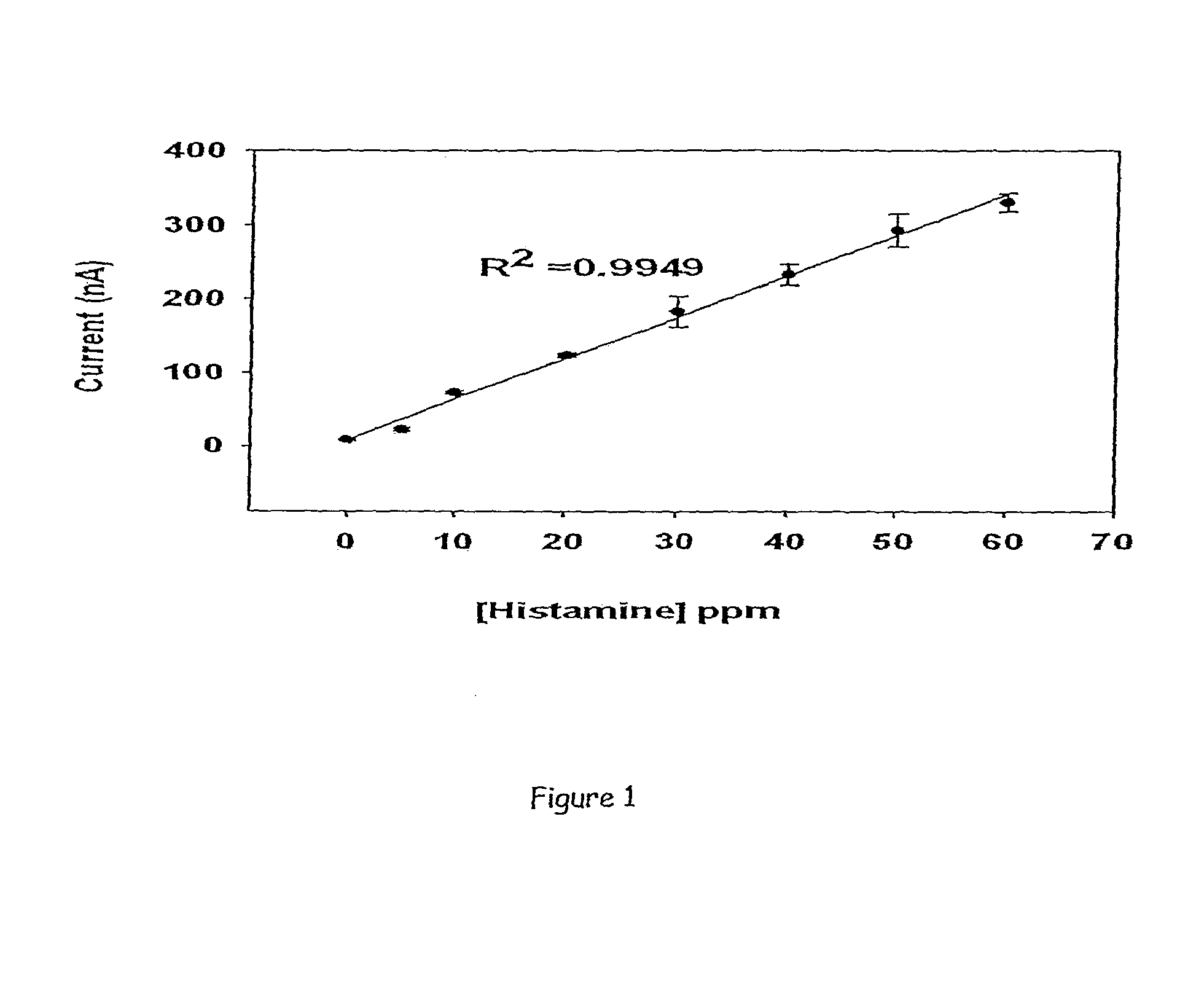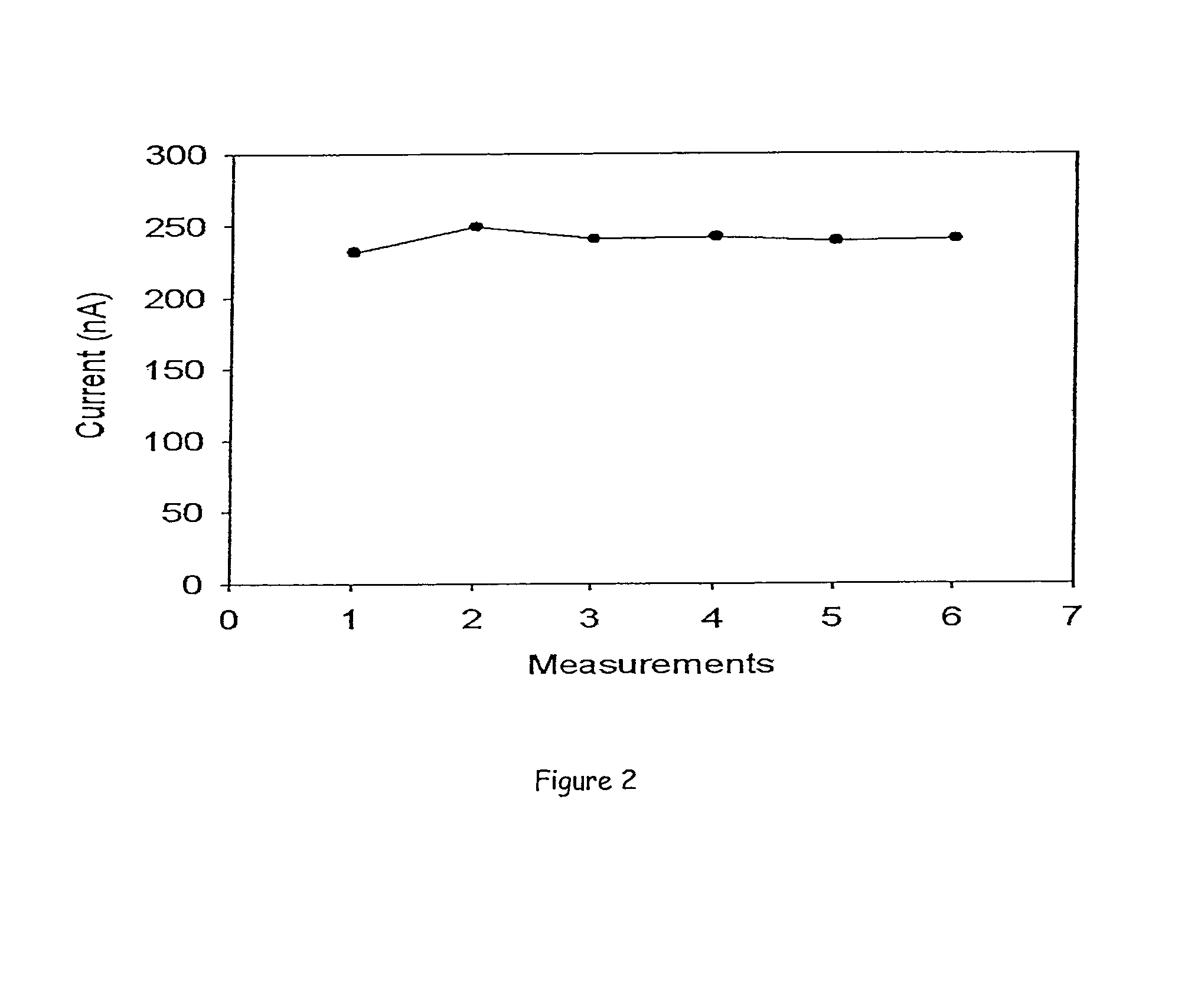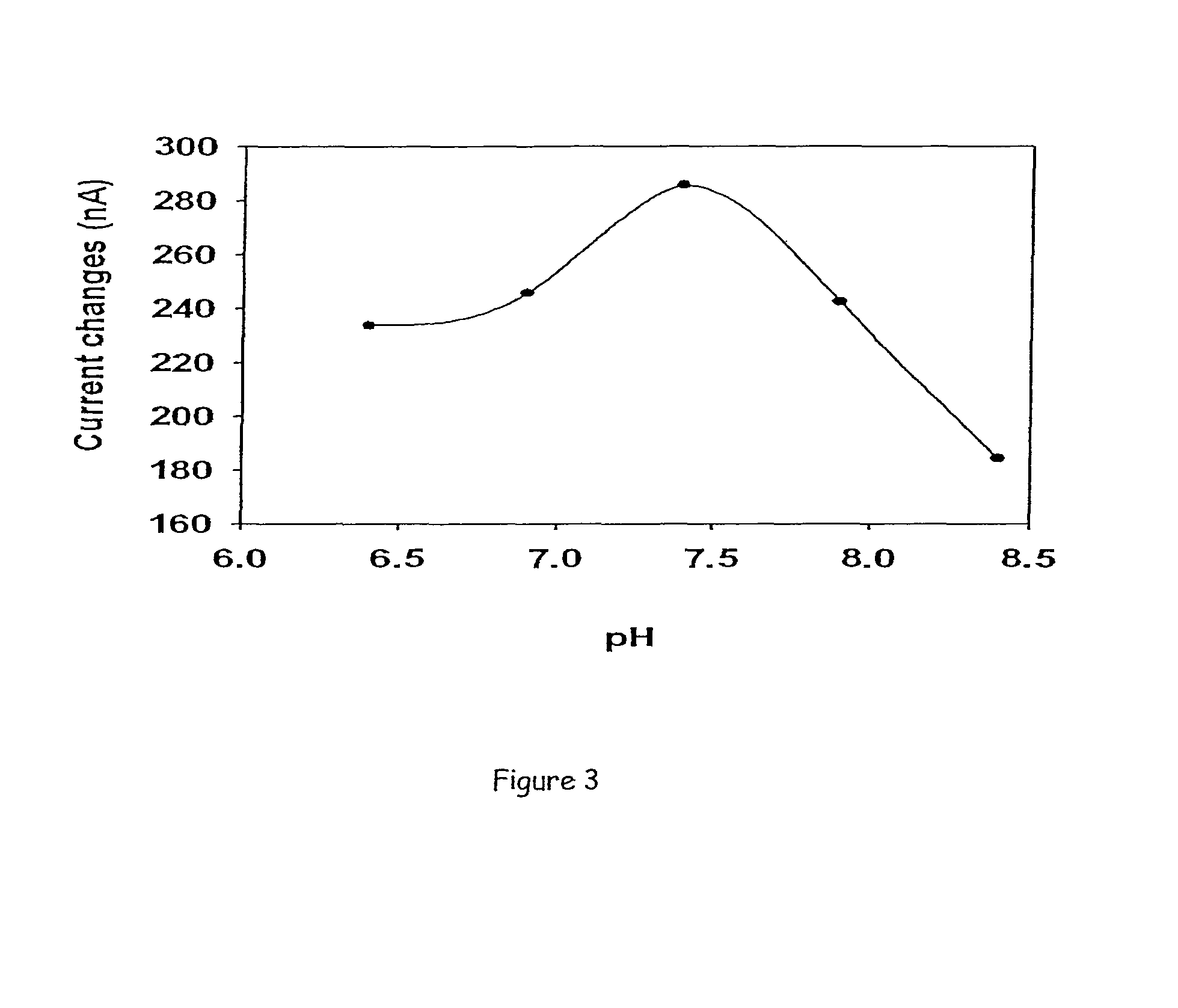Amperometric biosensor for histamine determination
a biosensor and amperometric technology, applied in the direction of material analysis by electric/magnetic means, biochemistry apparatus, electrolysis components, etc., can solve the problems of complicated and expensive instruments, difficult control of seafood and fish products, and inability to uniformly distribute histamine in decomposed fish, etc., to achieve the effect of determining the freshness and spoilage of seafood
- Summary
- Abstract
- Description
- Claims
- Application Information
AI Technical Summary
Benefits of technology
Problems solved by technology
Method used
Image
Examples
first embodiment
[0020]The present invention provides an amperometric biosensor for determining the level of histamine in a sample wherein immobilized diamine oxidase is used as the bioreceptor. In the present invention, referring now to FIG. 6, a biosensor 600 comprises a substrate 610 with a screen-printed working electrode 612, a counter electrode 614 and a reference electrode 616 disposed thereon. Preferably, the biosensor 600 comprises a carbon paste based screen-printed working electrode 612, a platinum rod counter electrode 614 and a silver / silver chloride (Ag / AgCl) reference electrode 616.
[0021]Diamine oxidase 618 is immobilized on the surface of the screen-printed working electrode 612 by poly (2-hydroxyethyl methacrylate) (photoHEMA) 620. Before immobilization, the enzyme is dissolved in 0.1M phosphate buffer in a range of pHs from 6.4 to 8.4, with the optimum pH of 7.4. PhotoHEMA is prepared as reported by Low and coworkers (2005). 2-hydroxyethyl methacrylate (HEMA) is mixed with photoini...
second embodiment
[0027]In the present invention, the three-electrode system of the biosensor is miniaturized by screen-printing technology. Miniaturized biosensor offers several advantages, such as only small amount of enzyme is required for the fabrication of the biosensor, mass production of such miniaturized biosensor is possible and consequently disposable-type of biosensor may be realized. The present miniaturized biosensor comprises a working electrode, a counter electrode and a reference electrode wherein all of the electrodes are screen-printed onto a substrate. Preferably, the biosensor comprises carbon paste based screen-printed working and counter electrodes and a silver chloride (AgCl) paste based screen-printed reference electrode. All three electrodes are screen-printed onto a polyester substrate.
[0028]Diamine oxidase is immobilized on the surface of the screen-printed working electrode by poly (2-hydroxyethyl methacrylate) (photoHEMA) as described in the previous embodiment. The prese...
PUM
| Property | Measurement | Unit |
|---|---|---|
| voltage | aaaaa | aaaaa |
| voltage | aaaaa | aaaaa |
| reaction time | aaaaa | aaaaa |
Abstract
Description
Claims
Application Information
 Login to View More
Login to View More - R&D
- Intellectual Property
- Life Sciences
- Materials
- Tech Scout
- Unparalleled Data Quality
- Higher Quality Content
- 60% Fewer Hallucinations
Browse by: Latest US Patents, China's latest patents, Technical Efficacy Thesaurus, Application Domain, Technology Topic, Popular Technical Reports.
© 2025 PatSnap. All rights reserved.Legal|Privacy policy|Modern Slavery Act Transparency Statement|Sitemap|About US| Contact US: help@patsnap.com



